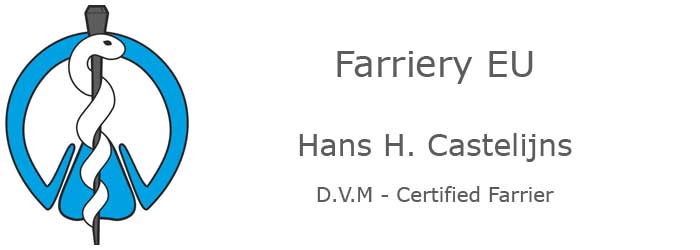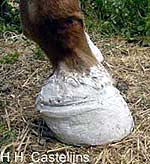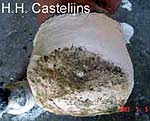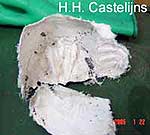 |
How to apply a (plaster) cast in case of acute laminitis.Abstract:Laminitis is certainly a medical emergency but also requires urgent (bio) mechanical measures aimed at diminishing tension on the inflamed laminae, pressure on the anterior sole under the distal margin of the coffin bone and finally the asymmetrical tensions on the hoof capsule produced when the horse turns. These mechanical means can be obtained in many ways:
The advantages of this last procedure can be summarized as follows: quick, easy (to apply and to change), cheap, clean, easy to mould to the required shape. With a bucket of water (warm, if one wants to speed up the process) and 3-4 rolls of plaster (CaSO4 x 2H2O), 10 cm wide for small / medium feet, 15 cm high for large feet, one proceeds to unroll the first drenched roll in one's hands, moulding it into a rounded mass to be applied to the caudal part of the foot. With the other 2-3 (wetted) rolls one wraps the hoof, holding the initial “ball” in place and leaving the sole, anterior to the frog, free. The hoof should be preferably unshod and trimmed moderately, especially the toe should be trimmed if to long. The “ball” of plaster should protrude from under the distal margin of the hoof at the heels. The wrapping should be performed in the usual, diagonally alternated way: medial bulb-lateral toe, lateral bulb-medial toe. Care should be taken to round off the proximal part of the cast, around the coronary band and the bulbs, before the plaster sets, so as to avoid pressure sores. The final result should distantiate the sensitive anterior sole from the ground and transfer weight to the caudal part of the sole, bars and frog. Using fresh plaster bandages and warm water, an efficient helper holding up the leg and having placed the controlateral limb on a soft padding material, the quick setting time of plaster usually permits the application of the cast without regional anaesthesia. A plaster cast of the hoof, thus applied, should be seen as a mechanical emergency measure, to be used till the acute phase has stabilized, after which a more durable shoeing solution should be found. |
|
Hans Castelijns
D.V.M - Certified Farrier



